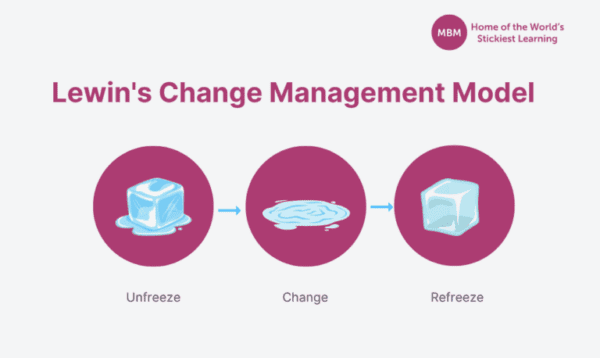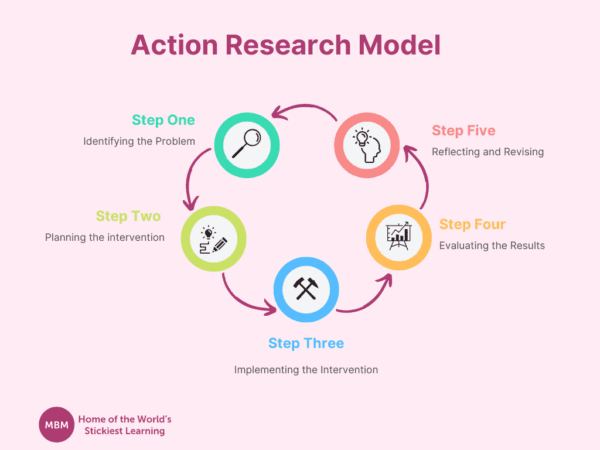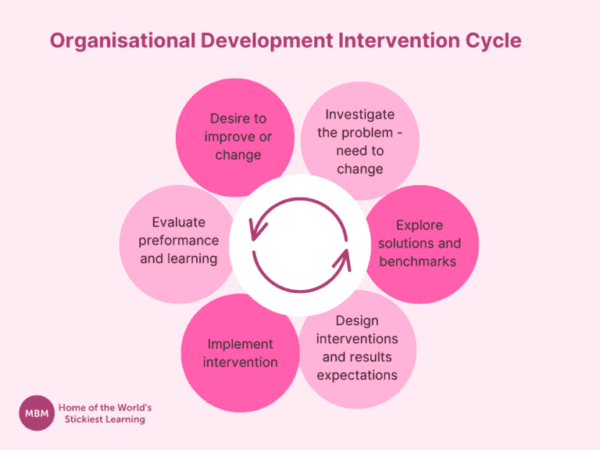Use Change Management to Successfully Adopt Types of Change
One key factor to ensure the continued growth and success of any modern organisation is change. There are various types of change, but let’s first define what it is from a business perspective.
Change refers to the transition or transformation of an organisation from its current state to a desired future state.”
Understanding the various types of change can help individuals and organisations navigate and adapt to the challenges and opportunities that come with it.
In this context, different types of change can be categorised based on their scope, impact, and cause. Some common categories include organisational change, technological change, cultural change, and environmental change.
Let’s discuss this in more detail.
Types of Change:

Organisational Change
Organisational change refers to any alteration in the structure, processes, policies, or culture of an organisation.
This type of change can range from a simple re-organisation of departments to a major shift in the overall mission or direction of the company.
Some examples of organisational change include downsising, re-branding, mergers and acquisitions, and the implementation of new technologies.
Technological Change
Technological change refers to the introduction of new and improved technologies into an organisation.
This type of change can have a major impact on the way an organisation operates, as it can significantly increase efficiency, reduce costs, and improve quality.
Examples of technological change include the implementation of automation systems, the introduction of new software, and the adoption of new manufacturing techniques.
Cultural Change
Cultural change refers to changes in the shared values, beliefs, norms, and practices within an organisation.
This type of change can be difficult to achieve, as it often involves shifting deeply ingrained attitudes and behaviours. However, cultural change can be necessary in order to adapt to a rapidly changing environment or to address challenges within the organisation.
A few examples of cultural change include implementing a new customer-focused approach, promoting a more inclusive workplace, and shifting from a hierarchical to a flat organisational structure.
Environmental Change
Environmental change refers to changes in the external environment that impact an organisation.
This type of change can come from a variety of sources, including shifts in the economy, changes in regulations, and technological advancements. Environmental change can present both challenges and opportunities for organisations and can drive the need for other types of change.
Examples of environmental change include the rise of e-commerce, new environmental regulations, and advances in renewable energy technologies.
Now That You Understand Types of Change…
There is no question that as organisations navigate a constantly shifting business environment, they need to be skilled at managing change. But doing this right requires a systematic approach, called change management.

In other words, organisations can achieve their objectives and maintain competitiveness by aligning their resources, procedures, and organisational structures with change management.
What Exactly Does Change Management Entail, Then?
Understanding the need for change, creating a plan, putting the changes into action, keeping track of the process, and assessing the results are all crucial components of the change management process.
Not only does it require effective control of the technical aspects of change, but it also involves managing the human component, including overcoming opposition, gaining support, and ensuring the changes are long-lasting.
Leadership, strong communication, and collaboration at all organisational levels are key ingredients in the recipe for successful change management.
In fact, change management is an ongoing process that requires continuous evaluation and adaptation as both the organisation and the external environment evolve.
The objective of change management is to cultivate a resilient, adaptable organisation that can continuously improve and rise to the challenges of the future. Hence, change management plays a vital role in fostering growth and ensuring the long-term success of the organisation.
Why Companies Need Change Management for Any Types of Change:
I. Maintain Competitiveness
Moreover, to ensure the success of change management initiatives, it is important to have a clear understanding of the need for change and to create a well-thought-out plan.
This involves not only controlling the technical aspects of change but also addressing its human component, such as overcoming resistance and gaining support.
Effective leadership and strong communication are key to overcoming these challenges and keeping the change process on track.
The process also involves monitoring progress and continuously assessing the results to make necessary adjustments and ensure long-lasting success.
II. Overcoming Change Resistance
When it comes to change management, organisations often face resistance from employees. This can stem from a range of factors, such as fear of the future, job security concerns, or feeling left out of the change process.
To effectively overcome this resistance, organisations must embrace a comprehensive approach that includes building support, engaging employees in the change process, and clearly communicating the benefits of the change.
By taking these steps, organisations can successfully navigate the challenges of change and drive positive outcomes for all stakeholders.
III. To Ensure Sustainable Change
Change management is essential for ensuring that the changes made in an organisation are sustainable.
Organisations can avoid common pitfalls and ensure that changes are properly implemented and ingrained into the organisation’s processes and culture by using a well-planned and implemented change management strategy.
Continued evaluation and adaptation are crucial elements of sustainable change because they help organisations grow and change over time.
IV. To Improve Business Performance
An effective tool for raising business performance is change management.
Organisations can streamline operations, boost efficiency, and boost customer satisfaction by coordinating processes and structures.
Improved financial performance and a stronger position in the market are two additional benefits of effective change management for organisations.
Approaches for Successful Implementing Types of Change:
#1. Lewin’s Model for Change Management for Managing Types of Change:
Kurt Lewin, an organisational psychologist, first proposed the three-step Lewin’s Change Management Model in the 1940s.

It is one of the most popular change management models and is widely regarded as a straightforward but efficient method of managing change.
The foundation of Lewin’s model is the idea that change occurs in three distinct phases: unfreezing, changing, and refreezing.

I. Unfreeze
To overcome resistance and pave the way for successful change implementation, the unfreezing phase in Lewin’s model is vital.
During this stage, organisations must address resistance by creating a sense of urgency, garnering support, and clearly communicating the benefits of the change.
By taking these steps, the unfreezing phase sets the foundation for a smooth and effective transition in Lewin’s model.
II. Change
Lewin’s model’s second stage is about evolving.
The change itself is put into practice during this phase. It calls for clear employee education, training, and support as they adjust to the new working practices.
Organisations must take special care and pay close attention during the change stage to ensure that the changes are carried out effectively and efficiently.
III. Refreeze
Refreezing is the last phase of Lewin’s model.
The refreezing stage is an important step in Lewin’s model as it solidifies the changes and ensures their longevity.
By monitoring the situation, gathering feedback, and making adjustments where needed, organisations can reinforce the changes and make them a permanent part of the organisation’s culture and procedures.
Thus, the refreezing stage helps to ensure the success and sustainability of the change.
#2. Kotter’s 8-Step Change Model for Managing Types of Change:
John Kotter’s 8-Step Change Model is a widely used framework for managing organisational change. The model outlines the key steps that organisations should take in order to successfully implement change.

By understanding and applying these steps, organisations can effectively navigate and manage different types of change, such as strategic change, operational change, technological change, cultural change, and crisis management.
The 8 steps of the model include creating a sense of urgency, forming a powerful coalition, creating a vision for change, communicating the vision, empowering others to act on the vision, creating short-term wins, consolidating gains and producing more change, and anchoring new approaches in the organisation’s culture.
By following these steps, organisations can create a roadmap for change that ensures the success of their change initiatives and maximises the benefits to all stakeholders involved.
I. Establish a Sense of Urgency
With clear and persuasive communication, the first step of Kotter’s 8-Step Change Model sets the stage for a successful change initiative.
By establishing a sense of urgency and inspiring action, leaders can build momentum and rally support, positioning the organisation for successful change.
The creation of a coalition of support from key stakeholders is also crucial, ensuring that the change initiative has the resources and backing it needs to succeed.
II. Form a Powerful Coalition
The creation of a strong coalition is the second step in Kotter’s 8-Step Change Model. This entails assembling a diverse group of people with the skills, influence, and commitment to drive change.
This coalition will be crucial in leading and implementing change.
III. Develop a Change Vision
The third step in Kotter’s 8-Step Change Model is to develop a change vision. This entails creating a compelling and crystal-clear picture of the ideal future state.
A clear vision can help to rally support and give the change effort direction.
IV. Communicate the Vision
The eighth step of Kotter’s change model, communicating the vision, is step four. To accomplish this, it is necessary to ensure that everyone in the organisation is aware of the vision.
V. Empower Others to Act on the Vision
To enable others to carry out the vision is the fifth step in Kotter’s eight-step change model. Giving employees the tools, power, and support they need to implement the change falls under this category.
VI. Create Short-Term Wins
Making short-term gains is step six in Kotter’s eight-step change model.
Finding and putting into practice small adjustments that can help generate momentum and a sense of advancement is required. These initial successes can aid in increasing support and sustaining the change effort.
VII. Consolidate Gains and Produce More Change
The seventh step of Kotter’s 8-Step Change Model is to consolidate gains and produce more change. This involves building on the momentum created by the short-term wins and making additional changes to move the organisation closer to the desired future state.
VIII. Anchor New Approaches in the Organisation’s Culture
Anchoring new strategies in the organisational culture is the eighth and final step in Kotter’s eight-step change model.
Ensuring the sustainability of the changes entails integrating them into the organisation’s systems, processes, and policies.
#3. Action Research Model for Managing Types of Change:
The Action Research Model is a cyclical 5-step process that allows organisations to continuously improve and make changes that address the needs and perspectives of all stakeholders.

By following these steps, organisations can effectively identify problems, develop solutions, and make changes that drive positive outcomes.
Note that successful change management requires a collaborative approach, careful monitoring and evaluation, and a commitment to continuous improvement.
I. Identifying the Problem
The first step in the Action Research Model is to identify the problem. This involves carefully examining the current situation and identifying areas that need improvement.
In this step, the type of change is also decided.
This step requires collaboration between stakeholders to ensure that all perspectives are taken into account.
II. Planning the Intervention
The second step in the Action Research Model is to plan the intervention. This involves developing a plan for addressing the problem and determining the resources required to implement the solution.
The intervention should be informed by the results of the problem identification step and should take into account the needs and perspectives of all stakeholders.
III. Implementing the Intervention
The third step in the Action Research Model is to implement the intervention. This involves putting the plan into action and making changes to address the problem.
It is important to carefully monitor and evaluate the implementation to ensure that it is achieving the desired results.
IV. Evaluating the Results
The fourth step in the Action Research Model is to evaluate the results. This involves assessing the impact of the intervention and determining its effectiveness.
This step should involve feedback from all stakeholders and should take into account any unexpected outcomes.
V. Reflecting and Revising
The final step in the Action Research Model is to reflect and revise. This involves reflecting on the results of the intervention and making any necessary adjustments to ensure that the solution is sustainable and continues to address the problem effectively.
This step requires continuous improvement and a commitment to adapting to changing circumstances.
#4. Organisational Development and Change for Managing Types of Change:
This refers to the type of change an organisation uses to accomplish its objectives more efficiently.

It entails the deliberate design, execution, and evaluation of programs and procedures aimed at boosting organisational performance and success.
As a continual process, organisational development and change help organisations stay ahead of the curve and adapt to the changing demands of their stakeholders.
By managing change successfully, organisations can reach their targets, increase their performance and effectiveness, and foster a culture of continuous improvement. To achieve this, it’s essential to have a well-thought-out plan, clear communication, and the participation of all stakeholders.
The Need for Organisational Development and Change
The need for organisational development and change arises from a variety of factors, including changes in the external environment, shifts in customer and stakeholder expectations, advances in technology, and evolving business models. Organisations must be able to adapt and evolve to stay competitive and meet the changing needs of their stakeholders.
Approaches to Organisational Development and Change
When it comes to organisational development and change, there are several options to choose from, including action research, Lewin’s change management model, and Kotter’s 8-step change model. Each method provides a blueprint for managing change and has its own strengths and weaknesses. Therefore, organisations should choose the approach that best aligns with their particular needs and goals.
Key Considerations in Organisational Development and Change
Successful organisational development and change require careful planning, effective communication, and the involvement of all stakeholders. It is also important to involve employees in the change process and provide them with the resources and support they need to successfully implement the changes. Effective change management also requires a commitment to continuous improvement and a willingness to adapt to change
What About Resistance to Change Management?

Understanding Resistance to Change
Resistance to change is a natural response to change that occurs when individuals or groups within an organisation are uncomfortable with the proposed type of change or fear its potential impact.
Resistance can take many forms, including passive resistance, active resistance, and sabotage.
Common Causes of Resistance to Change
Common causes of resistance to change include fear of the unknown, a lack of trust in leadership, a lack of understanding of the change, and a perceived threat to one’s job security or status. Resistance can also arise from a desire to maintain the status quo or a belief that the change is unnecessary.
Overcoming Resistance to Change
To overcome resistance to change, organisations must take a proactive approach that addresses the root causes of resistance.
This may involve communicating the rationale for the change, providing education and training, and involving stakeholders in the change process. It is also important to address any concerns or fears that employees may have about the change.
Strategies for Overcoming Resistance to Change
Strategies for overcoming resistance to change include building trust and credibility, involving employees in the change process, providing education and training, addressing concerns and fears, and communicating the rationale for the change.
It is also essential to be transparent and open about the change and to provide ongoing support and resources to help employees adapt to the change.
The Role of Leadership in Change Management:

Importance of Leadership in Change Management
Leadership plays a critical role in the success of change management initiatives.
Leaders set the vision for change, build support for it, and provide the guidance and direction needed to successfully implement change. Their actions and behaviours set the tone for the organisation and can either encourage or discourage employees from embracing change.
Characteristics of Effective Change Leaders
Effective change leaders possess several key characteristics, including a clear vision, strong communication skills, the ability to build relationships, and the willingness to take risks. They are also able to inspire and motivate others, navigate complex situations, and make difficult decisions.
Building a Culture of Change
Leaders can help build a culture of change by creating a shared vision for change, involving employees in the change process, and providing the resources and support they need to succeed.
They should also communicate openly and transparently about the change and be responsive to employee feedback and concerns.
Evaluation of Change Management:
Importance of Evaluation in Change Management
Evaluation plays a crucial role in change management, enabling organisations to assess the success of their change initiatives and pinpoint areas for improvement.
This process offers organisations essential feedback, which they can then use to refine their change management processes, thus making future changes more effective.
Key Evaluation Criteria
When evaluating change management initiatives, organisations should take into account several critical criteria, such as the effect of the change on the organisation, employee engagement and adoption levels, and the efficiency of the change process as a whole.
Moreover, it is crucial to contemplate the financial and resource costs associated with the change.
Evaluation Methods
To evaluate change management initiatives, organisations can utilise several methods such as surveys, focus groups, interviews, and data analysis.
The precise methods selected will vary depending on the change management initiative, the goals and aspirations of the organisation, and the resources at hand.
Using Evaluation Results to Improve Change Management for Types of Change:
The results of the evaluation should be used to improve the change management process, refine the approach to change, and identify areas for improvement.
Organisations should also share the results of the evaluation with employees and stakeholders to build trust and credibility and demonstrate the value of change management.
Conclusion

In conclusion, change management is a challenging process that demands meticulous preparation, implementation, and evaluation.
With options ranging from Lewin’s Change Management Model to Kotter’s 8-Step Change Model and the Action Research Model, organisations have an array of tools and methods to pick from when managing change.
The part of leadership is vital in constructing a culture of change, conquering resistance, and guaranteeing the success of change initiatives.
The evaluation of change management initiatives is equally important, as it assists organisations in determining the impact of change, recognising areas for improvement, and refining their change management processes.
An effective change management approach must take into account the distinct requirements of the organisation, its employees, and its stakeholders, and be comprehensive.
Hopefully, this article will be a guide to you in implementing change in your business, organisation or even your life. Check out our YouTube channel for more life-changing resources.




